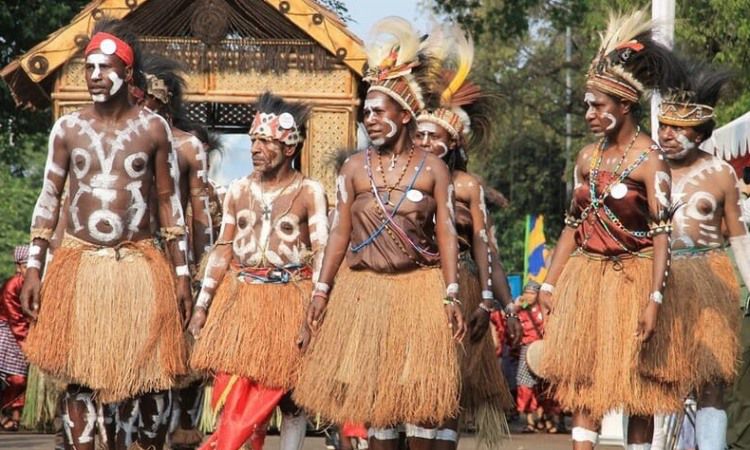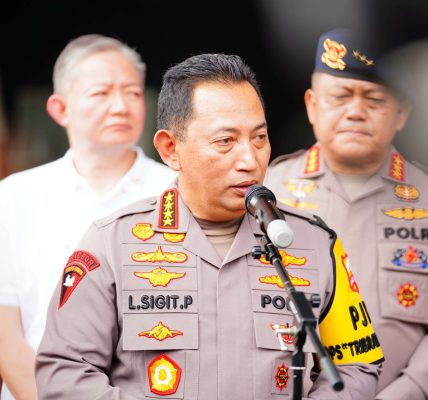Exploring the Charm of Papua’s Traditional Clothing: A Captivating and Meaningful Cultural Heritage

Embark on a captivating journey through the rich tapestry of heritage as we explore the stunning Papua’s Traditional Clothing, an epitome of beauty and profound symbolism woven into the fabric of Papua’s enduring culture. As the vibrant heart of this Indonesian island’s identity, the Papua’s Traditional Clothing is not merely a traditional garment; it is a masterpiece of artistry and meaning, reflected in the intricate motifs and vibrant colors that adorn the attire of the Papuan tribes. Delving deeper than its alluring surface, each thread of the Papua’s Traditional Clothing narrates a tale of tradition, each pattern echoes the ethos of the Papuan way of life, and every accessory highlights an age-old legacy worth cherishing.
From the intriguing complexities of the Papua’s Traditional Clothing to the iconic accessories that complete the ensemble, this exquisite cultural emblem encompasses more than just the pakaian khas Papua—it represents a dialogue of historical depth, societal values, and ancestral pride. Whether gracing ceremonial occasions or showcased as part of a cultural visit, the motif adat Papua has left onlookers mesmerized, prompting greater interest in Papua’s Traditional Clothing for ceremony, the embrace of Papua’s Traditional Clothing, and the profound of Papua’s Traditional Clothing purpose.
In this unfolding narrative, we will navigate through the diverse spectrum of ethnic dan culture of Papua, from the colorful swirls of traditional attire to the ever-growing phenomenon of renting Papua’s Traditional Clothing for those wishing to immerse themselves completely during a culture visitation in Papua. Join us as we step into this spectacular world, paying homage to the Papua’s Traditional Clothing, a cultural heritage that not only adorns the body but also embraces the soul.
Exploring the Rich Tapestry of Papua’s Traditional Clothing
The Papua’s Traditional Clothing serves as more than mere attire; it is a vibrant sartorial emblem of the rich culture of Papua. With its myriad of colors, intricate patterns, and distinctive designs, this traditional clothing is not just about aesthetics—each piece holds a story, a tradition, and a specific identity that resonates with the people of Papua. As we delve into the fascinating world of Papua’s traditional garments, we uncover a visual language that speaks volumes about the island’s diverse heritage and the deep-rooted significance these clothes bear.
The Palette of Papua’s Heritage
Papua’s cultural landscape is boldly reflected in its traditional textiles and costumes. The Papua’s Traditional Clothing is as diverse as the province’s topography, each variant aptly representing the wide array of ethnic groups and tribes scattered across the region. From the intricate koteka worn by the Dani men to the vibrant noken bags sported by the women, each item tells a tale of communal identity and social cohesion.
Significance Embroidered in Threads
- Colors and Symbolism: The riot of colors found in Papua’s Traditional Clothing is not random. Red often embodies bravery and spirituality, while white can signify purity and peace. Blue reflects stability and the profound depths of the ocean surrounding the island.
- Motifs and Patterns: Motif adat Papua is laden with symbols. Spirals may represent the cycle of life, and geometric patterns could symbolize ancestral wisdom or the island’s rugged terrain.
- Designs and Utility: The design of each piece of clothing is tailored to the lifestyles of the community. For instance, the Papua’s Traditional Clothing isn’t just for show—these garments are designed for ease of movement and durability during traditional activities.
The Papua’s Traditional Clothing tells a story far beyond its aesthetic appeal. “Every thread woven into the fabric of Papua’s traditional dress embodies the spirit and identity of its people,” says a local cultural historian. “It is essential that we preserve these sartorial narratives for future generations.”
As the island opens up to tourists and outsiders, the interest in the accessory of Papua’s Traditional Clothing has surged. Many visitors are captivated by the complex artistry and often seek to participate in culture visitation in Papua or even opt for renting Papua’s Traditional Clothing to immerse themselves in the local culture.
Furthermore, understanding the value of Papua’s Traditional Clothing is crucial for anyone looking to respect and partake in the cultural heritage. Each garment is typically crafted for specific occasions, with pakaian upacara adat Papua playing a central role in ceremonial events, reflecting the ethno-cultural mosaic of the island.
In summary, the Papua’s Traditional Clothing is a stunning testament to the complexity and beauty of Papua’s cultural legacy. Efforts to maintain and cherish these textiles are crucial, not only in preserving Papua’s cultural identity but also in sharing with the world the profound narratives imbued in their ethereal weaves and intricate craftsmanship.
Cultural Significance and Symbolism Behind the Traditional Attire
The distinctive Papua’s Traditional Clothing is not just a visual feast; it’s a repository of cultural wisdom, a tapestry woven with stories and significance. Each element, from the vibrant motifs to the intricate patterns, serves as an emblem of the rich traditions and beliefs of the Papuan people. To delve into thePapua’s Traditional Clothing is to understand a language of symbols that articulates identity, history, and the sacredness of ceremonial life in this fascinating part of the Indonesian archipelago.
- Profound Meanings in Motif Adat Papua: The motifs adorned on the traditional clothing of Papua are more than mere decorations. They carry the ancestral narratives, tales of war and peace, and totems that represent clans and tribes. These designs are not arbitrary; they are carefully crafted to encapsulate the wisdom of generations and the unwritten laws of nature and society revered by the Papuan people.
- Ceremonial Importance: Pakaian upacara adat Papua plays a pivotal role in the cultural tapestry of the region. Whether it’s a rite of passage, a festival, or a ritual, the appropriate attire is donned to honor the event’s sanctity. The garments act as conduits for cultural expression, enabling participants to embody and perform their traditions with pride and reverence.
- The Right Attire for the Right Occasion: Understanding when to wear the various pakaian tradisional Papua is akin to speaking a subtle dialect of cultural fluency. Specific ensembles are reserved for weddings, funerals, harvest festivals, and other significant gatherings. Each occasion calls for a distinct set of attire, complete with unique accessories, which collectively communicate respect for the customs being observed.
The Papua’s Traditional Clothing is a vibrant emblem of the island’s ethos and the artistic prowess of its people. As visitors explore Papua’s Traditional Clothing, they are often entranced by the profound connection between the community and their apparel—a relationship that underscores the continuity of the Papuan legacy. The value of Papua’s Traditional Clothing reminds us that every thread counts in the fabric of cultural preservation, urging a commitment to safeguard these sartorial masterpieces for generations to come. Through initiatives like renting Papua’s Traditional Clothing, even outsiders can partake in the celebration of this extraordinary cultural heritage, appreciating the complex interplay of etnik dan budaya Papua that thrives within each garment.
Accessorizing the Papua’s Traditional Clothing: Completing the Ensemble
When exploring the vibrant culture of Papua through its traditional attire, one cannot overlook the significance of the accessories that accompany the Papua’s Traditional Clothing. These accessories are not mere embellishments; they carry profound cultural resonance, imbue the wearer with a distinct identity, and accentuate the enchanting beauty of the Papua’s Traditional Clothing. In this section, we delve into the artistry and symbolism behind these traditional adornments and how they amplify the essence of Papua’s cultural attire.
- Traditional Accessories of Papua: The panoply of Papuan accessories typically includes intricately crafted items such as distinctive headgear made of bird feathers, beaded necklaces, armbands, and ornate belts. These pieces are not randomly chosen but are reflective of the rich tapestry of ethnic and cultural diversity within the region.
- Aesthetic and Cultural Significance: Each piece of accessory tells a story or represents a facet of Papuan life. “The people of Papua use these adornments not just to enhance their physical appearance but to convey their status, community roles, or accomplishments,” explains a local cultural expert. For example, the number and type of feathers in a headdress can signify the rank or prowess of a warrior.
- Integration into Modern Fashion: The influence of traditional Papuan accessories extends beyond ceremonial occasions. Designers are increasingly integrating motifs from Papua’s Traditional Clothing and its accessories into contemporary fashion, creating a beautiful fusion that honors the heritage while embracing modernity. This has led to increased visibility and appreciation of Papuan culture across different platforms.
The mastery behind these accessories reflects centuries-old traditions, highlighting the role of local artisans who have passed down their skills through generations. By incorporating the accessories of Papua’s Traditional Clothing into both traditional and contemporary clothing, the people of Papua bridge the past and the present, offering a timeless narrative of their history and values. As these elements garner attention, it’s crucial for efforts of preservation of traditional clothes to be steadfast, maintaining the authenticity of these cultural jewels. The beauty of the Papua’s Traditional Clothing is made whole with its accessories, making every adorned individual a living, breathing canvas of Papuan heritage. Whether at a kunjungan budaya di Papua (cultural visit in Papua), or during pakaian upacara adat Papua (traditional ceremonial dress in Papua), this vibrant attire continues to be a source of pride and a reflection of the enduring spirit of the Papuan people.
Preserving and Promoting Papua’s Traditional Clothing
In the age of modernization and the fast pace of global cultural integration, the Papua’s Traditional Clothing, a timeless emblem of Papua’s heritage, faces several challenges in its preservation. Yet, simultaneous efforts are being made to promote and sustain this cultural wealth. The fascinating attire, which holds a deep connection with the many aspects of the daily lives, traditions, and values of the Papuan people, is not only crucial for cultural identity but also serves as an attraction that bolsters local economies through cultural tourism.
- Challenges in Preservation: The preservation of Papua’s Traditional clothing is an ongoing concern, with old-age artisans dwindling and the newer generation gravitating towards modern attire. There’s a substantial responsibility to maintain the intricate skills and knowledge required to produce traditional Papuan garments.
- Cultural Tourism Impact: Cultural visits to Papua, significantly aid in keeping the local garment industry thriving. Tourists’ interest in the ethnic and cultural diversity of Papua propels the demand for authentic Papua Traditional Clothing, thus providing artisans with the means and encouragement to continue their craft.
- Promotion through Experience and Rental Services: There are various avenues available for individuals to engage with Papua’s Traditional Clothing, from authentic experiences to practical solutions like Papua’s Traditional Clothing:
- Cultural Immersion: Travelers seeking an immersive experience can partake in local festivals and ceremonies where the Papua’s Traditional Clothing is worn, offering a firsthand understanding of the value of Papua’s Traditional Clothing.
- Clothing Rental Services: Renting Papua’s Traditional Clothing not only makes this cultural attire accessible to a broader audience but also encourages people to appreciate and respect the traditions without the need to own the attire.
- Educational Programs: Workshops and seminars focusing on the history and making of Papua’s Traditional Clothing can enlighten the public and inspire local pride and interest in sustaining these artisanal skills.
” Papua’s Traditional Clothing is not just an item of clothing; it’s a narrative of our ancestors, a tapestry of our stories and traditions. Preserving it is akin to keeping our history alive,” states Yohanis Wonda, a local Papuan cultural ambassador.
The push for the continuation of Papua’s Traditional Clothing continues, with the aim of not only conserving the attire but also nurturing the values it represents. Through these initiatives, Papua’s Traditional Clothing remains an integral part of both ethnic and culture Papua and an enchantment for visitors and culture enthusiasts worldwide.
In summary, Papua’s Traditional Clothing stands as an entrancing cultural heritage, replete with profound meanings and a reflection of the rich legacy of Papua’s ethnic diversity. These traditional garments and accessories, with their distinctive motifs and vibrant colors, are more than mere clothing; they are a testament to the enduring strength and pride of the indigenous Papuan tribes. Embracing the cultural visits to Papua allows one to witness the beauty and significance of the ceremonial attire first-hand. The conservation of these traditional outfits is not only an act of cultural preservation but also a way of fostering appreciation for Papua’s unique customs and traditions. By supporting local craftsmanship and considering services like rental for Papua’s Traditional Clothing, we contribute to sustaining this captivating aspect of Papuan culture for future generations to cherish and celebrate.





